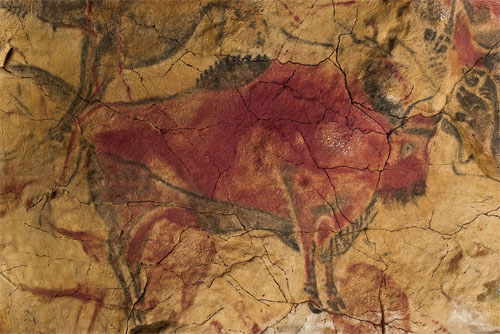Introduction:
The caves at Altamira, located in northern Spain, are an archaeological treasure that has captivated researchers, historians, and art enthusiasts for generations. Discovered in 1868, these caves are renowned for their ancient rock art, boasting a stunning collection of prehistoric cave paintings that provide a remarkable glimpse into the lives and beliefs of our distant ancestors. The breathtaking beauty and artistic skill showcased in Altamira’s cave paintings continue to spark curiosity and fascination among experts and laypeople alike.
Discovery and History:
The story of Altamira’s discovery is a fascinating one. In 1868, a local nobleman named Marcelino Sanz de Sautuola and his daughter Maria were exploring the area when they stumbled upon the entrance to the cave. Maria, being only eight years old at the time, was the first to notice the vivid colors and animal shapes adorning the cave’s walls. Sanz de Sautuola, a keen amateur archaeologist, recognized the significance of the find and promptly informed the academic community.
The cave paintings’ authenticity faced skepticism initially, as the artistic sophistication displayed in these primitive settings challenged prevailing beliefs about the capabilities of prehistoric humans. However, after extensive investigations and the advocacy of renowned archaeologists, the authenticity of Altamira’s cave paintings was finally acknowledged, firmly establishing their significance in the study of prehistoric art.
The Cave Paintings:
The main chamber of Altamira features an astonishing array of polychrome rock paintings, meticulously executed with an impressive understanding of form, perspective, and shading. The dominant theme of these prehistoric masterpieces revolves around animals, depicting horses, bison, boars, deer, and other creatures that would have been common in the region during the Upper Paleolithic era.
One of the most striking paintings at Altamira is the “Great Bison,” a life-sized representation of a charging bison. This stunning piece demonstrates the artists’ ability to capture movement and vitality in a static medium. The rendering of the animal’s muscles and horns, as well as the subtle use of shading, exemplifies the artist’s attention to detail and remarkable talent.
Another notable image is the “Horses’ Heads” painting, showcasing two life-sized horses in profile. The artists’ keen observation and understanding of the anatomy of these animals are evident in the intricacy of the lines and the portrayal of the horses’ expressions. The use of red, black, and ochre pigments, combined with the natural contours of the cave walls, adds a sense of depth and realism to the paintings.
The “Polychrome Ceiling” is yet another breathtaking feature of Altamira’s cave paintings. Here, a diverse array of animals, including bison, deer, and boars, adorn the cave’s ceiling, seemingly moving through the space with an ethereal presence. This remarkable overhead display attests to the artists’ willingness to explore every inch of the cave’s surface as a canvas for their creative expression.
Artistic Techniques and Meaning:
The artists of Altamira employed various techniques to create their cave paintings. Using natural pigments derived from minerals, such as iron oxide, they applied colors using brushes, fingers, or blowing through reeds. The artists’ deep understanding of the cave’s surface, with its undulating contours, contributed to the paintings’ three-dimensional effect, adding depth and dynamism to the compositions.
The meaning behind Altamira’s cave paintings remains a subject of scholarly debate. Many theories suggest that these paintings served ritualistic or spiritual purposes. Some experts propose that they were created to ensure a successful hunt by invoking magical properties or seeking divine favor from animal spirits. Others believe that the paintings were part of initiation ceremonies or acted as a visual storytelling medium, passing down cultural knowledge from one generation to another.
Preservation and Controversy:
The Altamira caves faced significant threats from human activity and natural decay after their initial discovery. The influx of visitors and inadequate preservation measures led to damage, prompting the Spanish government to close the caves to the public in 1977. Later, in 1982, Altamira was designated as a UNESCO World Heritage Site, bringing attention to its preservation needs and leading to more stringent conservation efforts.
However, the closure of the caves to visitors ignited debates about access and preservation. Some argued for limited public access to share the wonders of Altamira’s art with the world, while others insisted on complete closure to safeguard these precious paintings for future generations. Striking a delicate balance between conservation and appreciation of this ancient art remains an ongoing challenge.
Conclusion:
The cave paintings of Altamira stand as an awe-inspiring testament to the artistic prowess and cultural depth of our prehistoric ancestors. Their ingenious use of the cave’s contours and their profound connection to the natural world evoke a profound appreciation for the artistic legacy that has transcended millennia.
As technology advances, new methods of non-invasive research and preservation have emerged, offering hope for both safeguarding Altamira’s treasures and further unraveling the mysteries surrounding these ancient artworks. As we continue to delve into the captivating world of Altamira’s cave paintings, we are reminded of the universality of human creativity and the unbroken chain that connects us to our distant past.
Hits: 49

